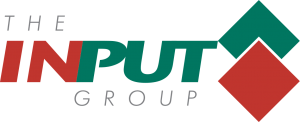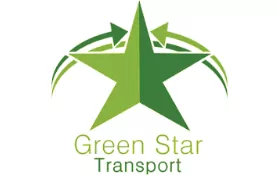If you’re caving, you need the right equipment.
In our latest blog James Blake from Powerful Ideas shares his caving PPE knowledge with us. James has been caving for over 14 years and in that time he has been working to become a caving technical advisor for a number of outdoor centres he is vastly experienced in FPE/PPE Inspections.
What is PPE?
‘PPE stands for Personal Protective Equipment. It applies to any equipment that aims to keep the user safe from potential risks.’ (Caving Technical Guide, Ecole Francaise de Speleologie)
There are three types of PPE, the inspection and recording regime will depend on they type of PPE.
The three types of PPE are:
- Class I: made to protect against small risks e.g. gloves and caving suits
- Class II: made to protect against serious risks e.g. helmets
- Class III: made to protect against life threatening risks e.g. ropes and connectors
Inspecting – General Guidance
Outdoor centres have a general duty to ensure any equipment used, is suitable and sufficient for the task and fit for its intended purpose. One way to this can be achieved is to have a regular inspection and maintenance procedures in place that are compliant with the equipment manufacturers recommendations (bold type is a really important point, if in doubt, check the guidance document).
Manufacturers are tied to specific acts of parliament, health, safety and welfare regulations within the legal system, it is these reasons that it is important to abide by their recommendations.
PPE should be inspected by a ‘competent’ person, this does have a legal meaning, it’s defined as someone who has the necessary technical expertise, training and experience to carry out the examination, test or task. Therefore, training to inspect equipment is required, this could be on site training, or for example, an FPE Inspectors Course, dependant on the situation, type of inspection and equipment.
The types of damages and things to check for on an inspection would include (dependant on individual item):
- Checking manufacture dates and CE/EN marking
- Lifespan
- Chemical damage
- Cuts
- Abrasion
- Heat damage
- Sunlight
- Dirt
- Deformation
- Stitching
- Water damage
- Cleaning of product
- Buckle and fastening systems (especially on harnesses)
- Connectors and metal work – nicks, burrs, bending, deformation and functionality
All inspections should be tracked using PPE inspection forms, this builds up a history for the item. These become legal documents and can be called into use in a court of law.
All manufacturers’ instructions should be available in the store room for each type of equipment. Every user should be encouraged to report any exceptional event that may have occurred e.g. fall or shock load) so it can be fully inspected and recorded.
There should be a clearly marked bin/area for equipment that needs re-inspecting and another clearly marked bin for equipment that has been taken out of circulation (this should then be destroyed and disposed of as soon as practically possible).
Types Of Inspection
There are 3 types of inspection:
- Routine Inspections: should be made every time the equipment is used, these are not recorded on the inspection record
- Additional Inspections: involve a rigorous inspection of the equipment. The frequency is given in the manufacturer’s instructions, but inspections should occur at least every 12 months by default (unless equipment comes under LOLER Regulations, in which case it would be 6 months), or following an exceptional event. These will be recorded on the inspection record.
- Full Inspection: are a combination of both of the above inspections. These will be recorded on the inspection record.
Legislation
To act in accordance with current legislation, all modern equipment must comply with European manufacturing standards. We are however in the process of leaving the EU, it is unsure at this time whether we will adopt this standard or if changes will be made.
These standards have been introduced since the early 1990’s to harmonise all previous manufacturing standards throughout the European Community e.g. UIAA, BS, DIN, AFNOR etc.
Each of these standards is known as E.N. (European Normatie) and although there are a few anomalies, for the most part, each piece of equipment will have its own standard.
Within each standard there will be requirements of strength, marking and instructions for use, the lifespan of the product, how to maintain and service the product etc. (Always check the instruction manual for this information.)
There are additionally 3 specific pieces of legislation that impact PPE inspection and testing regimes, these are:
- Lifting Operation and Lifting Equipment Regulations (LOLER) 1998
- Personal Protective Equipment at Work Regulations 2018
- Work at Height Regulations 2005
LOLER:
Equipment used for lifting persons should be thoroughly examined at least every 6 months (but manufacturers may require a more regular inspection). This equipment should also be examined each time that an exceptional circumstance has occurred which is liable to jeopardise the safety of the equipment.
Personal Protective Equipment at Work Regulations 2018:
The updated regulations still cover provision, marking, compatibility, maintenance, accommodation and training, maintenance and replacement of equipment.
In general PPE should be examined to ensure that it is in good order before being issued to the wearer. PPE should be examined before it is put on and should not be worn if it is found to be defective or has not been cleaned. (Such examinations should be carried out by properly trained staff in accordance with the manufacturer’s instructions)
Manufacturers’ maintenance schedules and instructions (including recommended replacement periods and shelf lives) should normally be followed. Simple maintenance can be carried out by the trained wearer, but more intricate maintenance should only be done by specialist personnel.
Work at Height Regulations 2005
Regulation 12, Inspection of Work Equipment: Work equipment includes; a personal fall protection system in the case of work restraint, work positioning, rope access and fall arrest.
This legislation (Schedule 7) outlines the particulars to be included in a report of inspection, these are:
- The name and address of the person for whom the inspection was carried out
- The location of the work equipment inspected
- A description of the work equipment inspected
- The date and time of inspection
- Details of any matter identified that could give rise to a risk to the health and safety of any person
- Details of any action taken as a result of any matter identified in number 5 above
- Details of any further action considered necessary
- The name and position of the person making the report
A typical record card may include the following information:
- Name or type of item
- Identification number
- Date of manufacture
- Date of first use
- Hours in use (if rope)
Supplementary information might include
- Name of manufacturer/supplier (for replacement purposes)
- Date to be replaced
- Kit number, colour or other form of identification
Management Of PPE In Batches
It is likely in an outdoor centre environment that they will have several of the same item (e.g. 30 identical helmets) that have been purchased and bought into use at the same time. I would recommend managing this equipment in batches.
If you have a batch of helmets (or other type of gear) that are intended for other people to use, then using one PPE form for the whole batch would work well. For this to be successful, each helmet should have a unique reference number.
In the case of equipment intended for group use, such as anchors and connectors, I’d recommend using one PPE form for the whole batch, however unique ID numbers are not necessary. When a faulty connector is retired, the form will simply indicate that there is one less.
Ropes should not be managed in batches, as when they are cut it creates two new lengths. For this reason, it is better to create one PPE form for each rope. When a rope is cut, a new PPE form is created for each length and the original form is appended. Whilst most centre will use only Type A ropes, if they do have any Type B rope (e.g. for rescues), these are to be treated and managed in the same way.
Marking Of Equipment
Marking of equipment is not required by the safety standards, but being able to identify each piece of equipment is, therefore allowing it to be properly inspected. Suggestions of how items could be marked are below:
- Helmets: Labelling should be done with a solvent free marker or paint pen, preferably inside the helmet, or on the battery box (not on the webbing)
- Ropes, Cords and Tapes: Adhesive letters and numbers applied on each end of each rope, protected by transparent heat shrink tubing work well for ropes and cords. For a Tape, they could us a paint pen or marker on the label
- Harnesses: Can be marked on the label with a marker/paint pen, on a strap with a rope specific marker, or on a metallic loop attached to the harness
- Metallic Items: A coloured paint pen can be used on an area where rope doesn’t rub. (People have previously engraved and hammered letters into items like this, I would not recommend this practice as you are unable to quantify the impact of engraving and hammering on a piece of equipment)
If using a coloured paint pen to mark equipment, it is best to vary the colour each year e.g. 2018 = green, 2019 = yellow, 2020 = purple. Painting over the previous years’ dot, this makes it easy to identify if equipment has been inspected.
Storage And Maintenance
All equipment should be stored and maintained in line with manufacturer’s recommendations. Any significant departure from these recommendations should be discussed beforehand with the manufacturer or their authorised agent, you should keep clear evidence of these conversations and communications.
Powerful Ideas Ltd are passionate about improving the performance of your people. Their People Consultancy provides a range of services including enhancing team working skills workshops, optimising workplace culture programmes, improving employee engagement solutions, leadership and management development programmes and change management programmes.
You can contact James on info@powerfulideas.co.uk
* The above picture is of James caving at Ogof Draenen, South Wales




